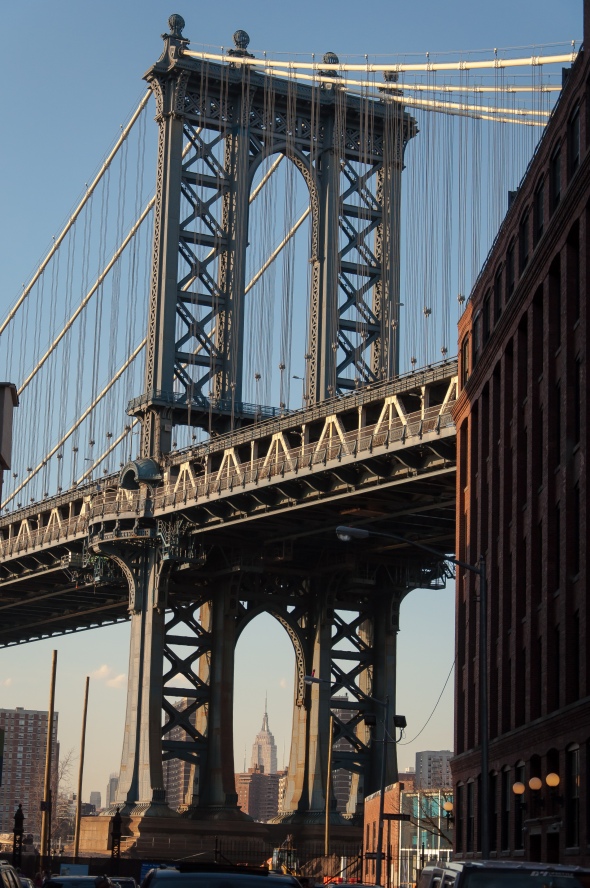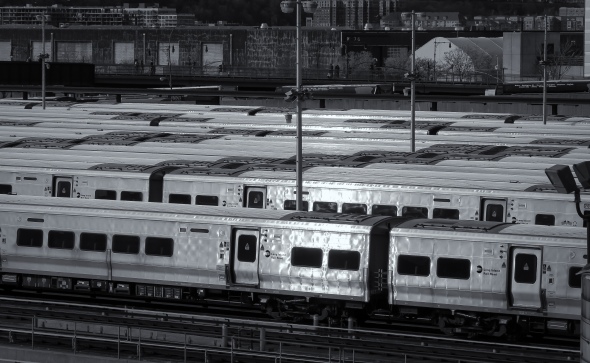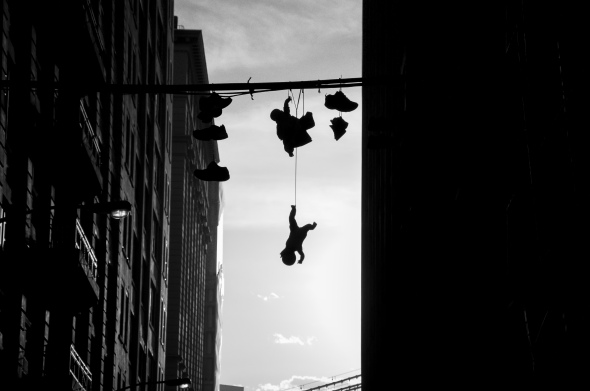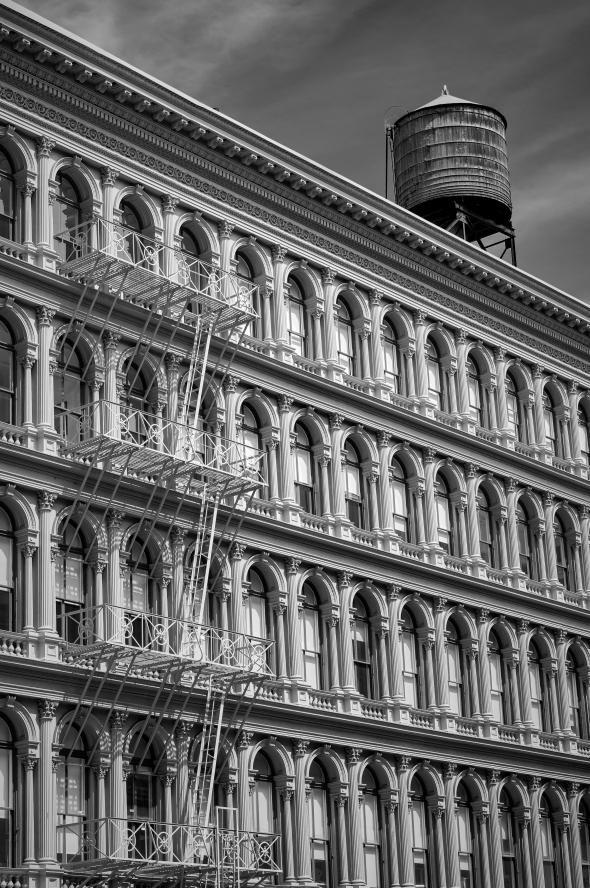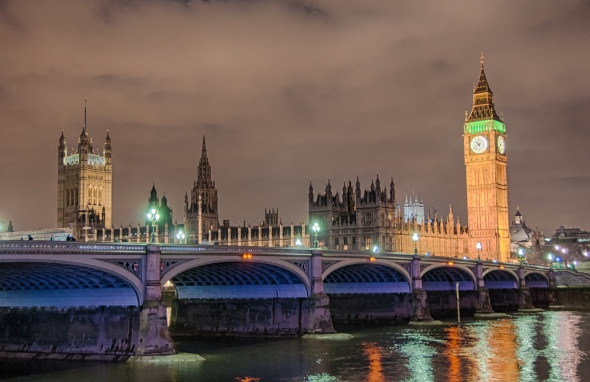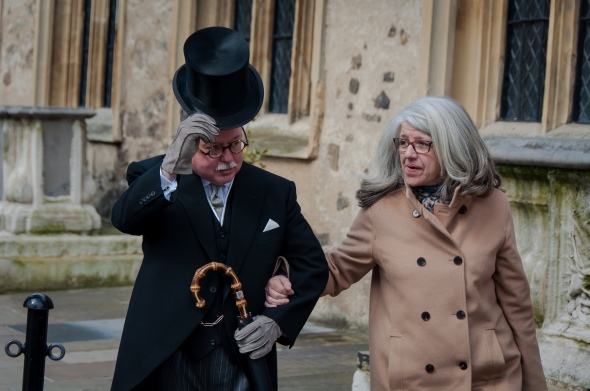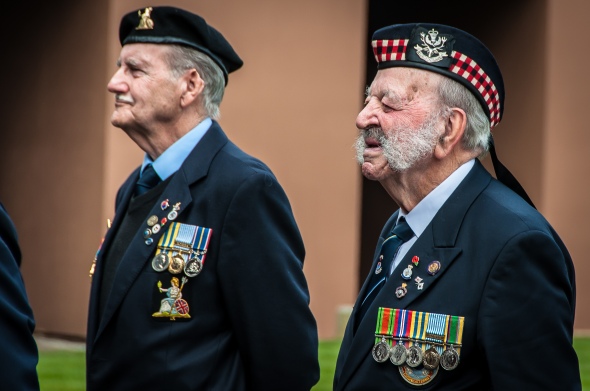Empire State Through Manhattan Bridge
New York – 2015
View of the Empire State Building through the Manhattan bridge as seen from the Dumbo neighborhood of Brooklyn.
Brooklyn Bridge – New York
Brooklyn – 2015
The Brooklyn Bridge is a hybrid cable-stayed/suspension bridge which connects the boroughs of Manhattan and Brooklyn over the East River. Completed in 1883, it is one of the oldest of either type bridge in the United States.When the Brooklyn Bridge first opened, it cost a penny to cross by foot, 5 cents for a horse and rider and 10 cents for a horse and wagon. Farm animals were allowed at a price of 5 cents per cow and 2 cents per sheep or hog. It is now free for all beasts and vehicles to cross.
Baby Flinging – New York
Brooklyn, New York 2015
Shoe flinging is the practice of throwing shoes whose laces have been tied together so that they hang from overhead power lines or telephone cables. Shoe flinging is thought to have many purposes, some examples are to define street gang territories, to pinpoint a drug dealing zone, or to commemorate a life or death event. Baby flinging, on the other hand, is a newer practice, which many believe is being used to mark the boundaries of rogue evil clown gangs in the rougher sections of Brooklyn.
The Grand Central Terminal Clock – New York
Grand Central Terminal, NY
The Grand Central Terminal Clock, the most iconic feature of Grand Central Terminal, is a four-faced brass clock on top of the central information booth. The clock was designed by Henry Bedford for the Connecticut clock crafting company Seth Thomas. The clock was completed in 1913 to honor the opening of the Grand Central Terminal. The clock also happened to be completed the same year as the 100th birthday of the Seth Thomas Company.
Each of the four clock faces is made from opalescent glass (now often called opal glass or milk glass) though urban legend misconstrues this fact and claims that the faces are mistakingly made of “opal”. The clock is valued in the tens of millions of dollars.
The clock is set every second by the atomic clock in Naval Observatory in Bethesda, Maryland. This means that the clock is accurate to within one second every 1,400,000 years.
The large American flag behind the clock was hung a few days after the September 11th attacks on the World Trade Center.
New York, New York
 Top of the Rock
Top of the Rock
Next pic series is from a 2015 visit to NY, NY. We start with the view from the top of Rockefeller Plaza looking south over Manhattan.
Palace of Westminster
London – 2015
Finishing up London 2015 pic series with one more shot of the Palace of Westminster, Elizabeth Tower/Big Ben at night.
Humans of London Tower
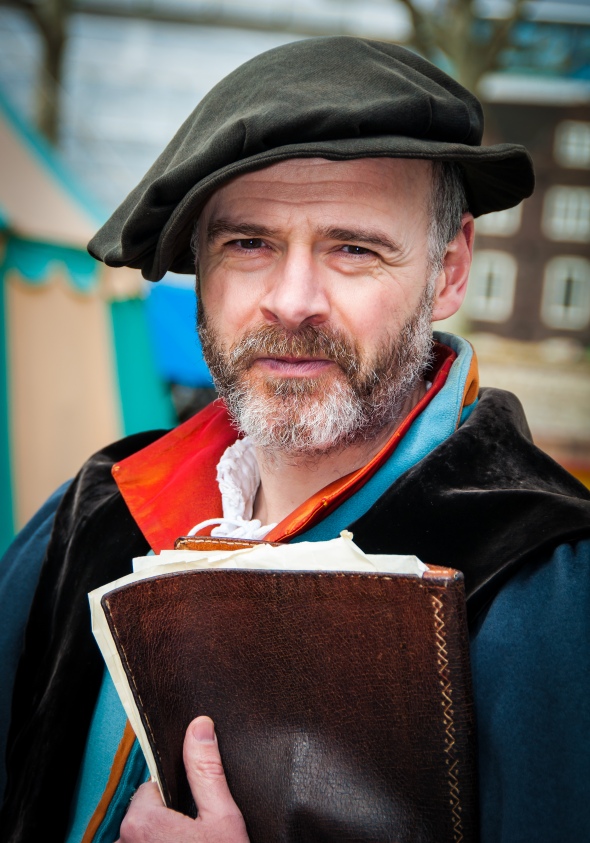 London Tower – 2015
London Tower – 2015
Finishing of my London series with a short “Humans of London Tower” set.
Tower Bridge from Tower of London
 View Across the Thames
View Across the Thames
The Tower of London (“Her Majesty’s Royal Palace and Fortress of the Tower of London“), located on the banks of the river Thames in central London, was first built in 1066 as part of the Norman conquest of England, the 11th-century invasion and occupation of England by Norman, Breton, and French soldiers led by Duke William II (William the Conqueror) of Normandy.
The White Tower, which gives the entire castle its name, was built by William in 1078, and was a resented symbol of oppression by the new ruling elite. Throughout the centuries the castle had been besieged multiple times, as controlling it was critical to controlling the country.
This view from outside the White Tower shows the Tower Bridge, a combined draw bridge and suspension bridge across the Thames which was built in 1886–1894.
Mind The Gap – London
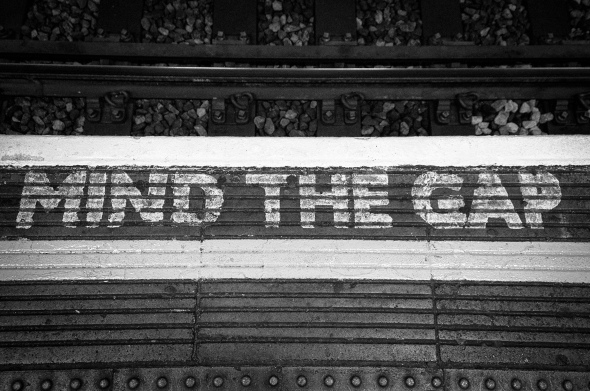 London Underground
London Underground
Queens Guard – London
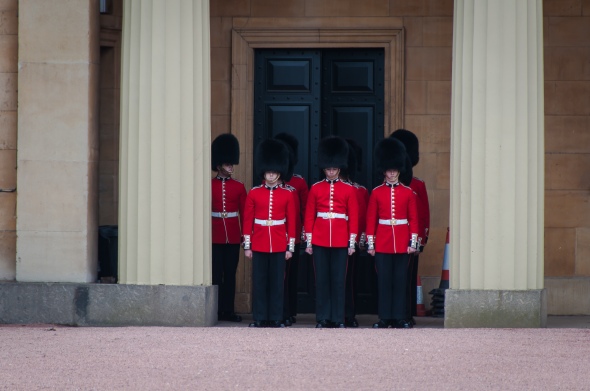 Buckingham Palace
Buckingham Palace
London Underground
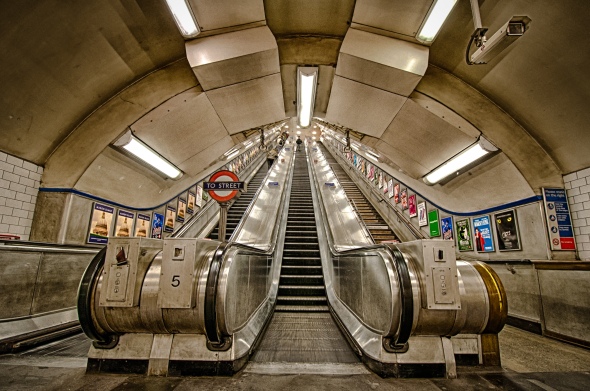 “The Tube”
“The Tube”
Wide angle shot of the London Underground (aka the Tube), which was the world’s first underground railway, opened in 1863. The nickname “The Tube” comes from the small, roughly circular tunnels which were dug to lay the tracks.
Elizabeth Tower (Big Ben)
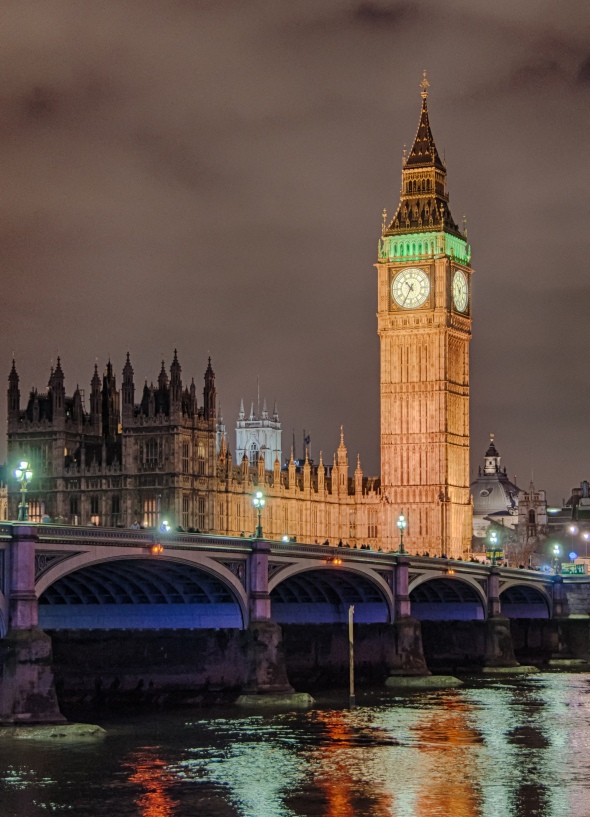 Palace of Westminster
Palace of Westminster
The Palace of Westminster, meeting place Parliament of the United Kingdom. The palace was built in the eleventh century. Most of the original medieval structures were destroyed in fires. The current design was by architect Charles Barry, in the English Perpendicular Gothic style of the 14th-16th centuries. Can you see Big Ben? No You can’t! Big Ben is the BELL in the tower, not the tower…the tower is called ” Elizabeth Tower”, named in 2012 to celebrate the Diamond Jubilee of Elizabeth II (previously just called the Clock Tower).
Phadiweg Falls, Zürich
 Der Phadiweg
Der Phadiweg
Long exposure shot of one of the many falls on the Phadiweg trail that leads from the old mill behind my home into downtown Zürich.
Hafenkran (Harbour Crane), Zürich, Switzerland
Hafenkran
The Zurich Transit Maritime Art installation “Hafenkran” (harbour crane), was a 90 ton rusting crane which operated for more the 50 years in the port of Rostock in northern Germany, was installed from 2014-2015 on the banks of the river Limmat in Zurich. Its purpose was to “bring a feeling of the sea – and a sense of freedom – to landlocked Zurich”. Is (was) it art? Still being debated.
Oepfelchammer, Zürich
 Oldest, originally preserved wine tavern in Zürich.
Oldest, originally preserved wine tavern in Zürich.
The original building was built in 1357 as a patrician house (noble medieval citizen), and didn’t see commercial activity until the 17th century, when a bakery was built. Various families operated bakeries there until 1801, when baker Hans Kaspar Denzl got a pub-license and added this wine tavern.
The tavern soon became a hotspot for intellectuals, poets, craftsmen, city officials, artists, and students to meet and discuss politics and religion during all night wine-fueled animated debates. This was once a haunt of Gottfried Keller, a 19th-century novelist and poet and one of Zurich’s most famous names.
House rules state that if you are able to climb into the rafters, span two rafters, and, while hanging upside down, can drink a glass of wine without spilling a drop, then you too may carve your initials into the rafters. I haven’t tried (yet).

